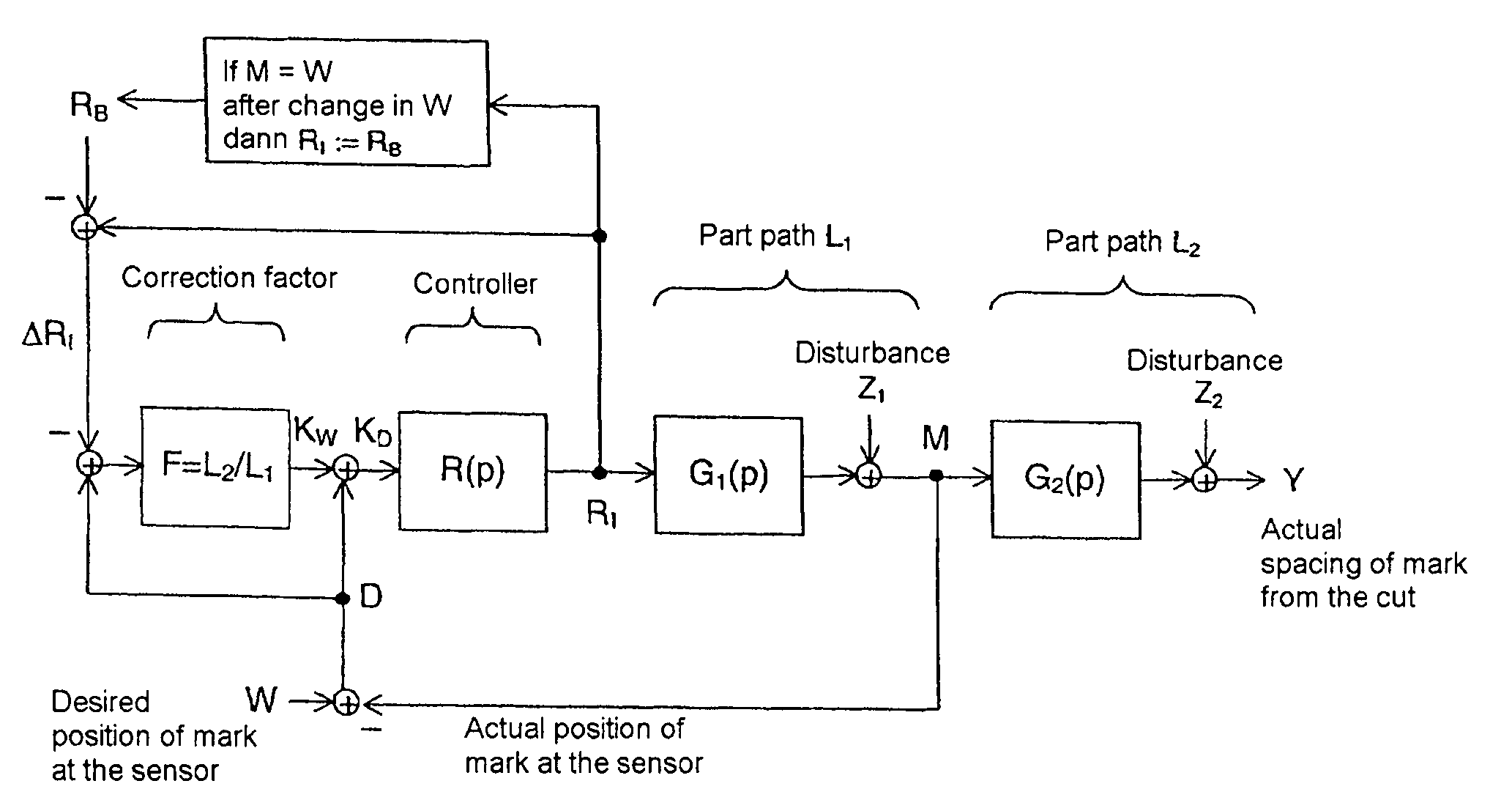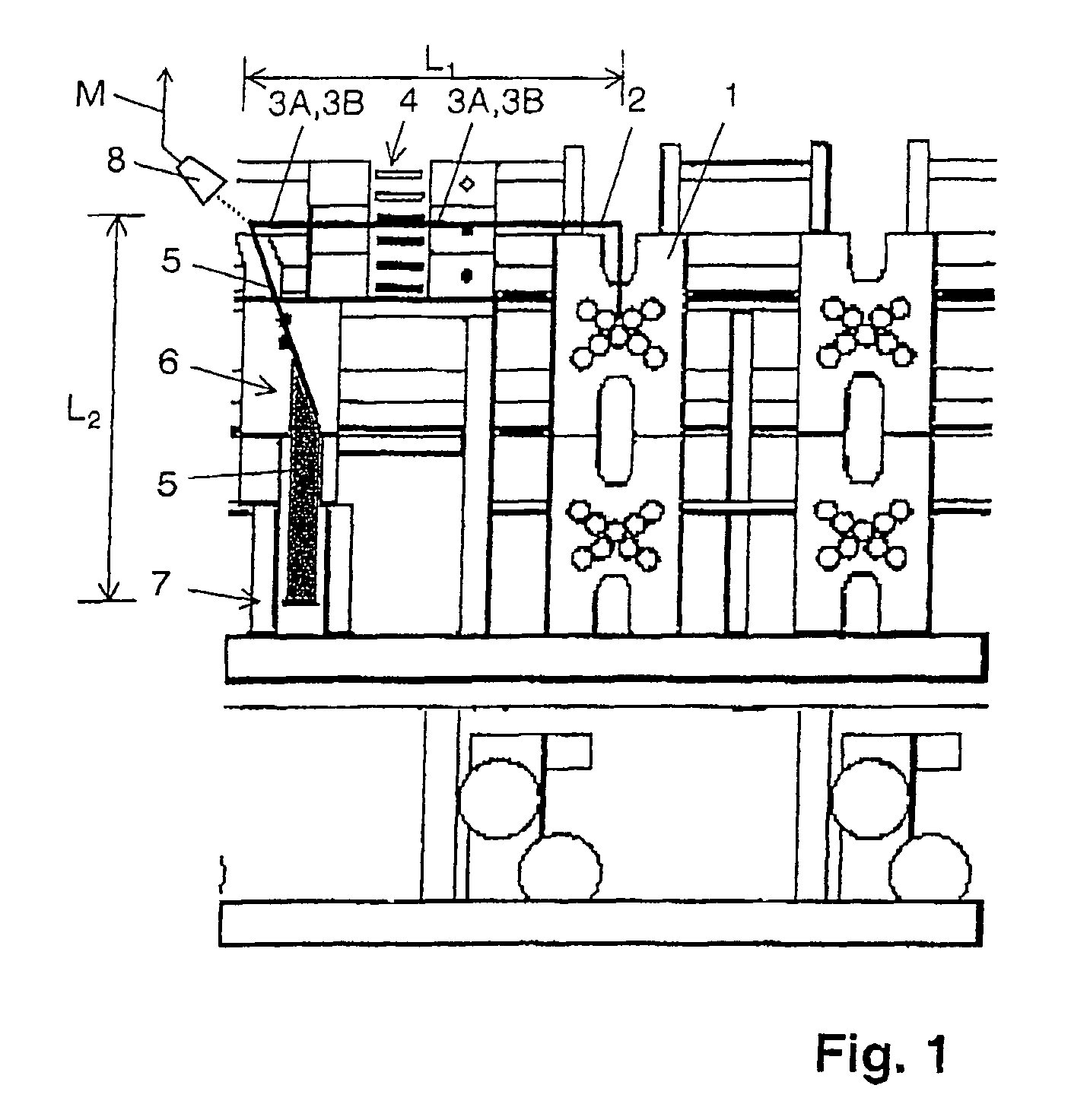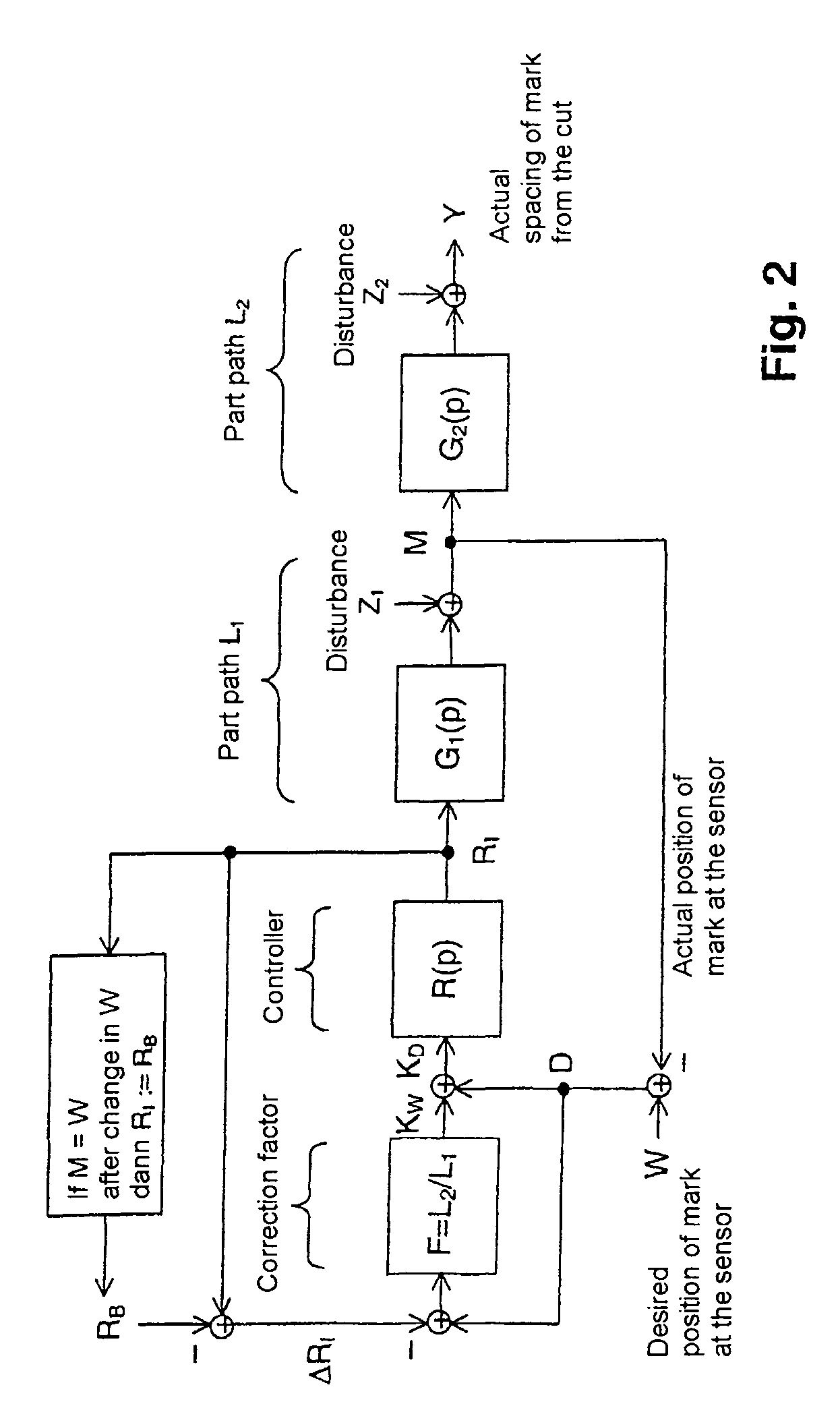Method for controlling the cut register in a web-fed rotary press
a rotary press and cut register technology, applied in the direction of web handling, instruments, transportation and packaging, etc., can solve the problems of increasing the probability of failure of the control of the cut register, complicated control system with cascade structure, etc., and achieves the effects of low cost, high accuracy, and simple control system
- Summary
- Abstract
- Description
- Claims
- Application Information
AI Technical Summary
Benefits of technology
Problems solved by technology
Method used
Image
Examples
Embodiment Construction
[0042]A brief overview of the path of a printing material in a press is shown in FIG. 1, to the extent to which it is important for the present invention. As FIG. 1 shows, a press normally has a plurality of press units, wherein each of the press units prints on a printing material web. In FIG. 1, for the purpose of simplification, only the web 2 printed in the press unit 1 is illustrated after leaving the press unit 1.
[0043]The web 2, like the webs coming from the other press units, is first of all cut longitudinally into two part webs 3A and 3B. Only one part web 3B of the two part webs 3A and 3B is turned in a turner unit 4, before the two part webs 3A and 3B are combined with other part webs coming from other press units but not illustrated to form a strand 5 and the latter is folded at a former 6. As a result of the folding at the former 6, the strand 5 is rotated through 90° and then runs to a knife cylinder 7, where it is cross-cut into individual sections. In the process, th...
PUM
| Property | Measurement | Unit |
|---|---|---|
| path length | aaaaa | aaaaa |
| rotational speed | aaaaa | aaaaa |
| speed | aaaaa | aaaaa |
Abstract
Description
Claims
Application Information
 Login to view more
Login to view more - R&D Engineer
- R&D Manager
- IP Professional
- Industry Leading Data Capabilities
- Powerful AI technology
- Patent DNA Extraction
Browse by: Latest US Patents, China's latest patents, Technical Efficacy Thesaurus, Application Domain, Technology Topic.
© 2024 PatSnap. All rights reserved.Legal|Privacy policy|Modern Slavery Act Transparency Statement|Sitemap



